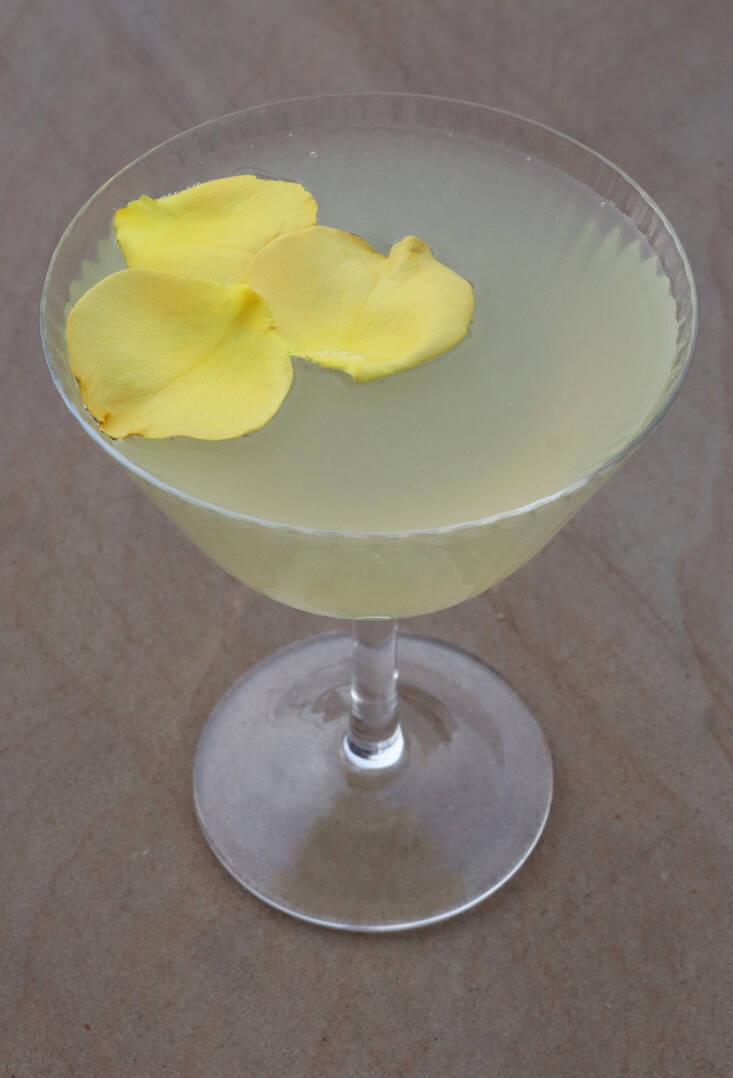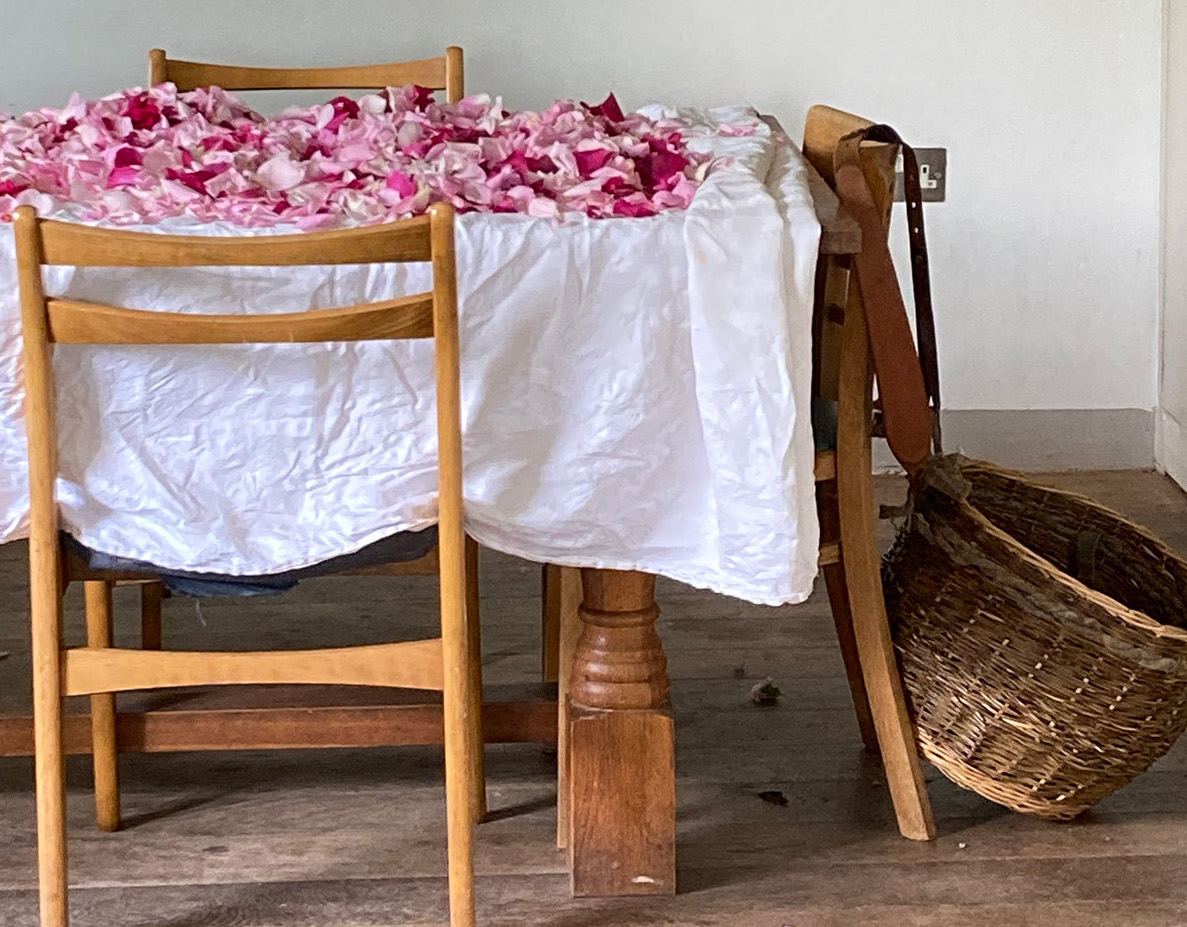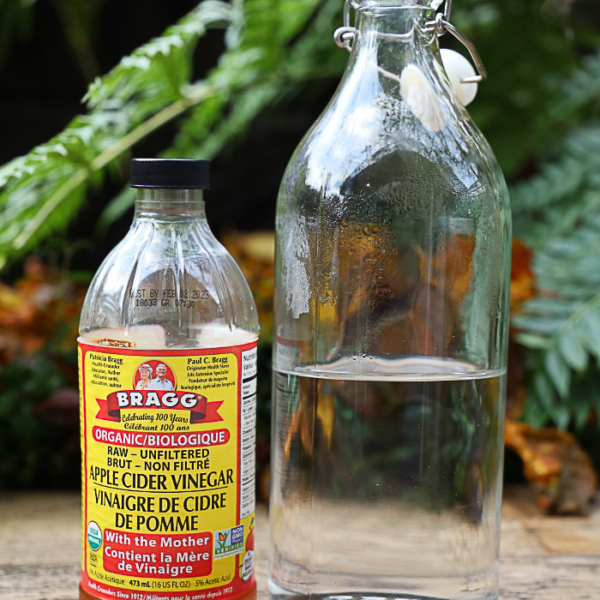Long ago, Laura Esquivel taught me to eat roses. In her debut novel, Like Water for Chocolate, there is a recipe for rose petals and quail. It is a dish that proves incendiary in the book. Everything about the recipe appealed to me: The defiance of forbidden love, a gift of perfumed roses, capturing a moment by translating it into a meal, being scooped up by a man on horseback (!). I headed straight for my mother’s early summer roses, in full bloom. The next day, we ate the quails in rose petal sauce under the big tree in that garden, and I loved everyone who was there. Per the recipe’s instructions.
Join us as we explore how to catch the scent of roses, learn some tips for preparing the petals, and visit with an English forager who collects roses by the basketful from her garden on the border of England and Wales.
Photography by Marie Viljoen, unless otherwise noted.
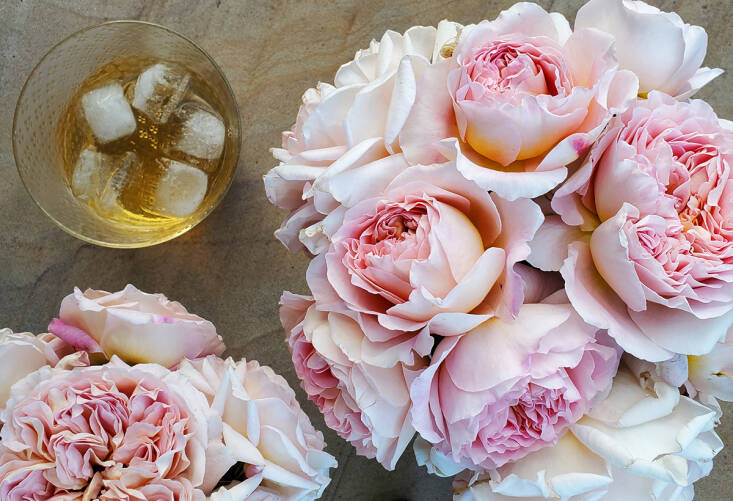
There doesn’t have to be drama when we eat roses, but there does have to be perfume (commercially grown long-stems are no good). I have always had a weakness for voluptuous English roses, and, one summer, when ‘Abraham Darby’, a David Austin hybrid, bloomed prolifically on our terrace despite a fatal viral infection, I cut all the blooms and stuffed them into vases before removing the doomed shrub. Their rich, fruity perfume was overwhelmingly good.
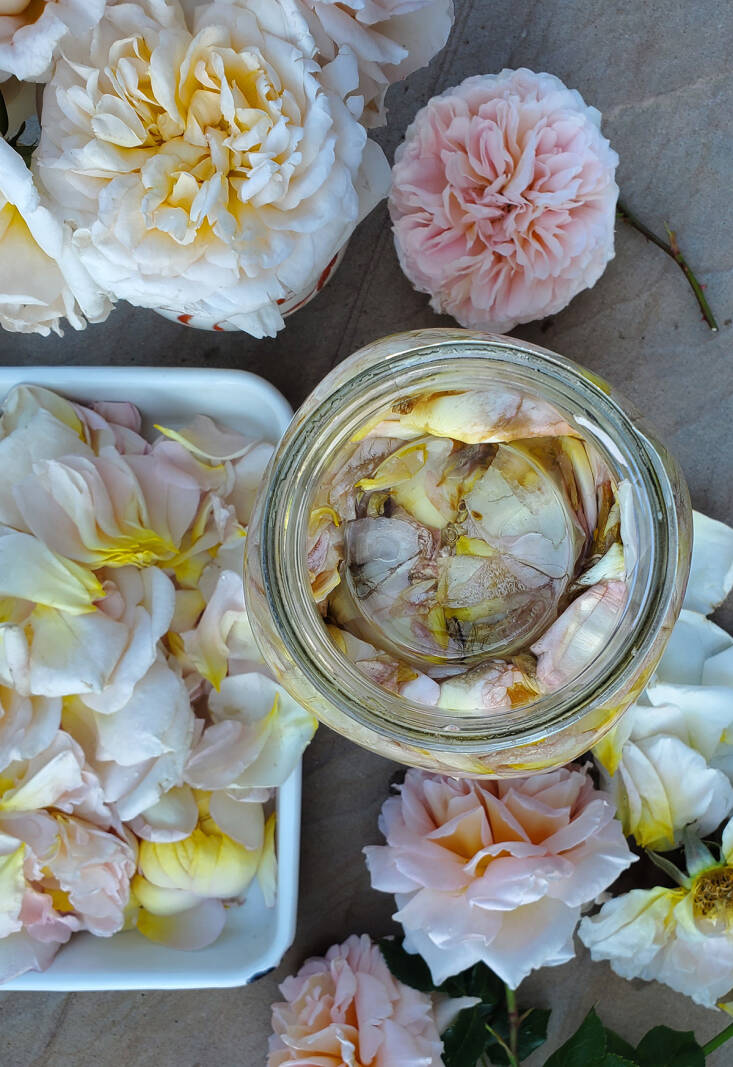
As they faded, their scent persisted, and it seemed a travesty to waste their final bounty. I decided to ferment the roses, making a sweet cordial that turns slowly into a rich and versatile vinegar, a process I follow with many other edible, scented flowers. A concentrated cordial followed (sugar + water + rose petals), although I noticed that it never fizzed, a sign that fermentation is active. And then, unusually, the next, vinegar-stage was delayed. Instead of turning slowly sour (a sign that acetic acid bacteria are at work), the liquid in the jar stayed stubbornly sweet. For months, exposed to air. My rose vinegar plans fizzled. Perplexed, I did some research, which revealed the possible cause: Roses have antimicrobial properties. Fermentation relies on the activity of beneficial microbes. The roses wanted nothing to do with them. So I basically had a rose-scented infusion with sugar. Luckily, it tasted great. I bottled it.
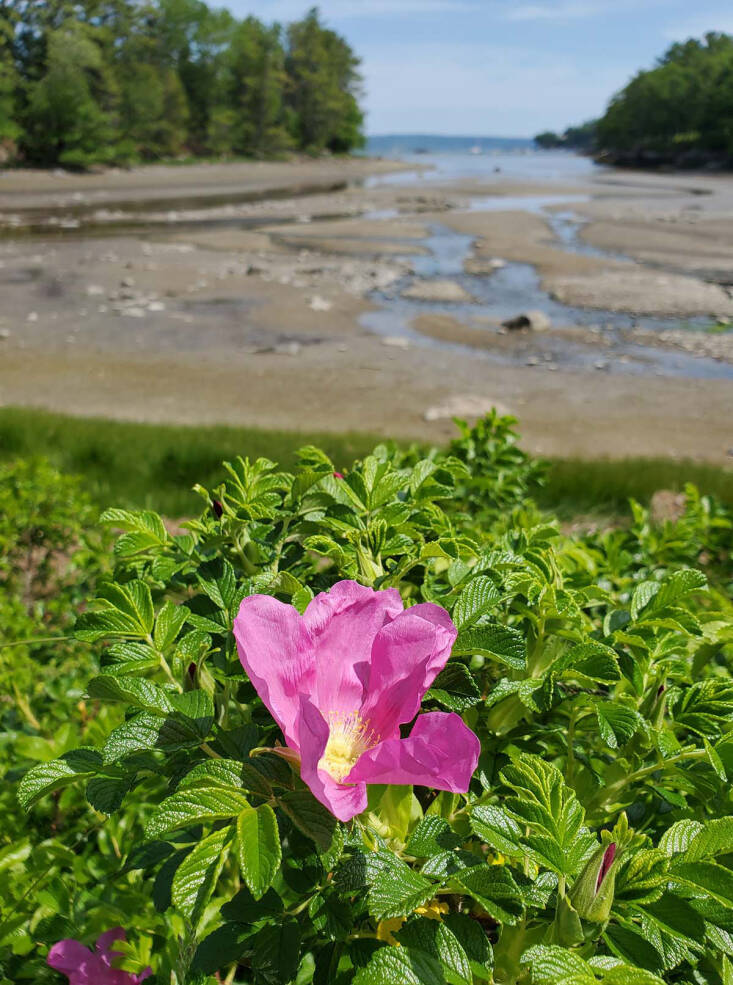
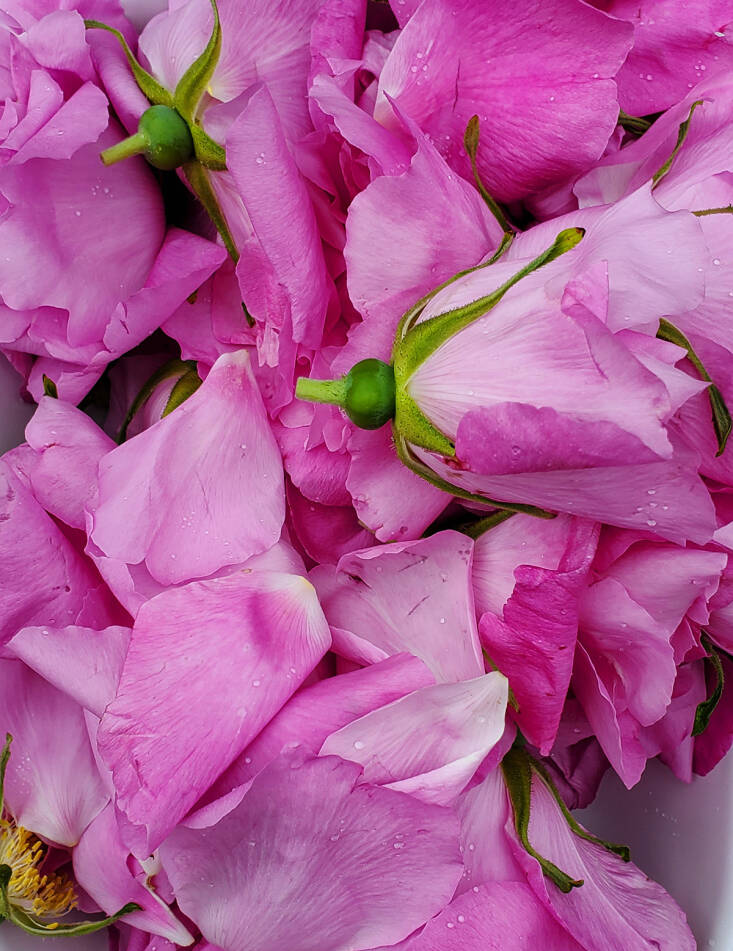
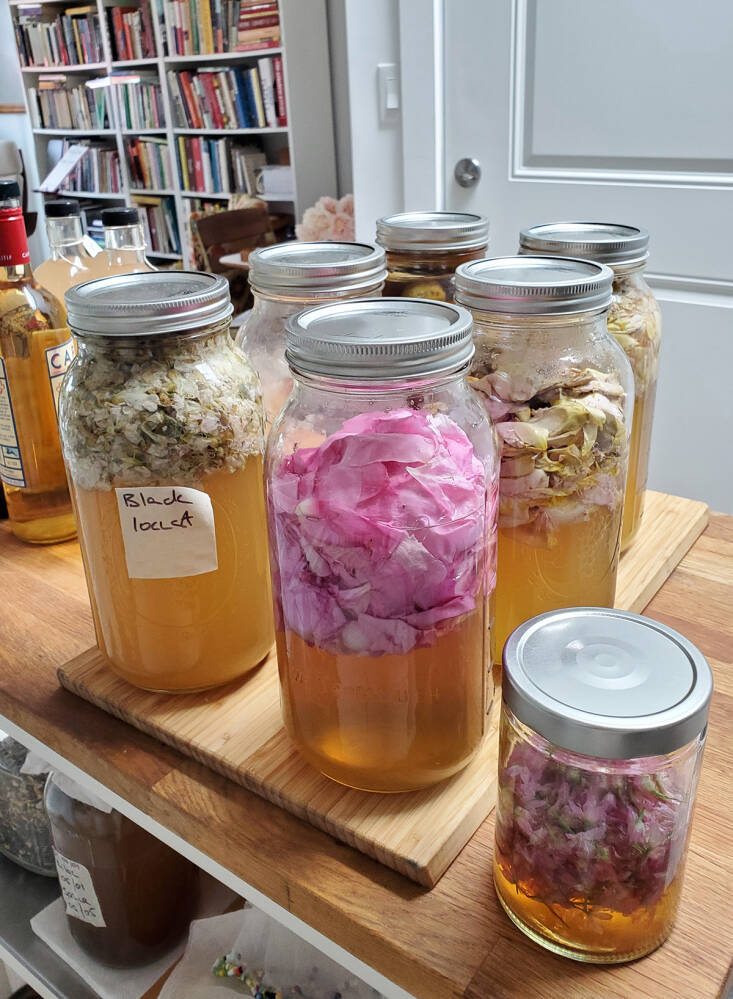
For sweet rose infusions I mix a syrup of equal weights sugar and water (I use organic sugar, so the liquid turns light brown), enough to fill whatever size jar I am using. The plucked petals are then added to it and dunked. If they keep rising in the liquid, a river stone or pickle weight keeps them submerged. After a week the contents of the jar smell wonderful, and I strain out the petals, bottle the rose syrup, and keep it refrigerated. It is mixed into drinks, stirred into pan juices, and dashed into salad dressings, where it plays especially well with grated carrots.
